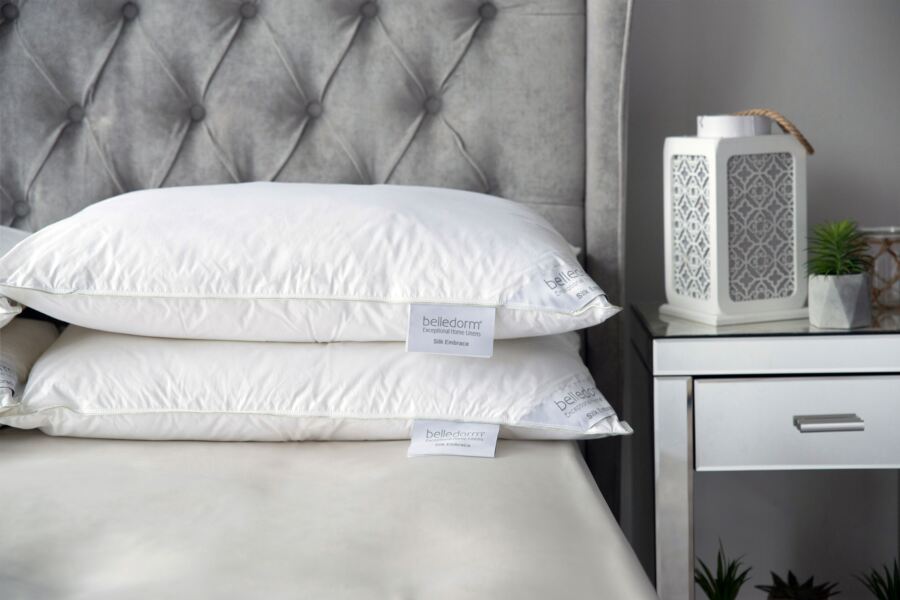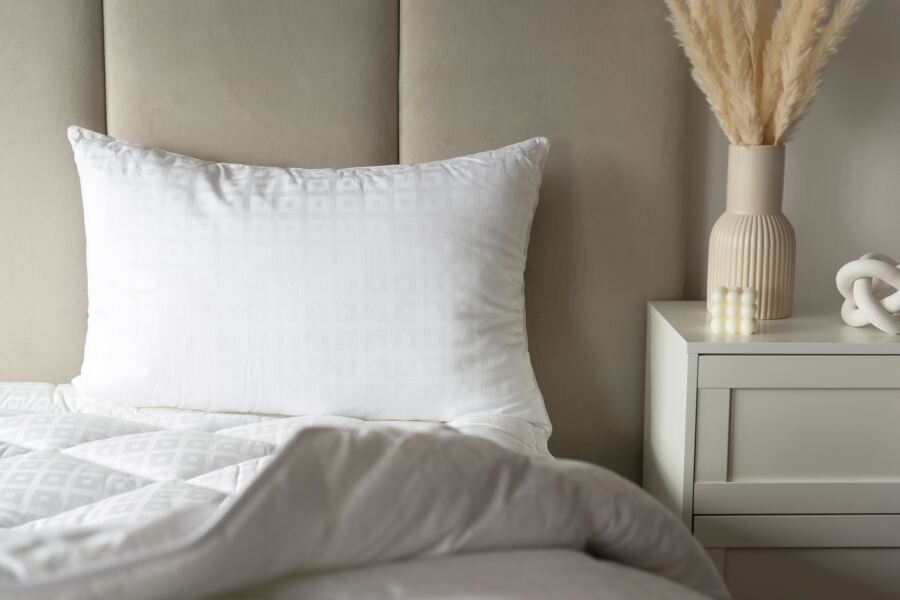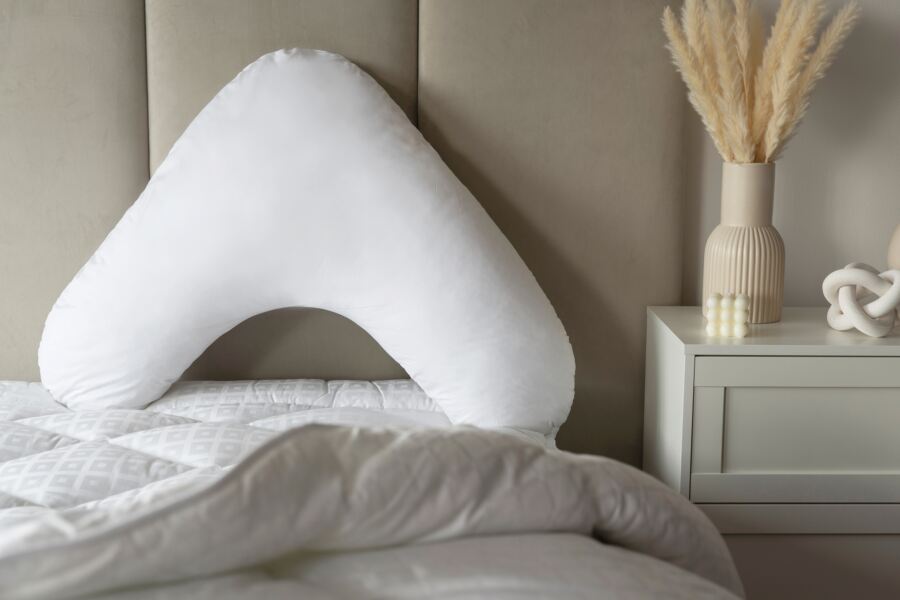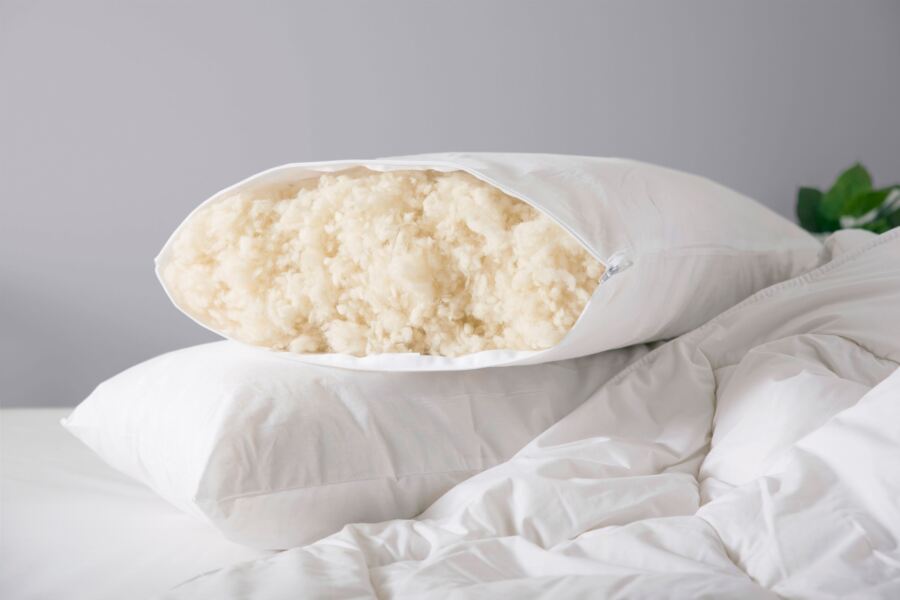Table of Contents
- The Top 3 Reasons Your Pillow Should Be Replaced
- The Telltale Signs It's Time To Change Your Pillow
- An Expert Guide On How To Wash And Dry Pillows
- How To Choose A New Pillow
- FAQs
- Conclusion
Ensuring your bedding is up to standard is essential for a good night's sleep. Waking up feeling unrested can impact your productivity for the day. Not getting enough sleep can also prove detrimental to your health.
Your pillow is an essential piece of bedding that helps to support your head and neck. Using the wrong pillow type or your pillow losing its shape can lead to discomfort. You may also suffer from neck pain or headaches.
Surprisingly, many people don't know how long their pillows should last. Most pillows will have a lifespan of between 1 and 2 years. This isn't very long. Regularly changing your pillows can offer a range of benefits.
As well as comfort and support, hygiene is a key reason to update your pillows. Allergens and dust mites can accumulate in pillows. Changing them regularly will reduce the risk of build-up.
Are you wondering how often should you replace your pillow? If you are, keep reading because we can help. This article will explore pillow types and lifespans. This will give you a better idea of how often to change pillows.
We will also look at the telltale signs that your pillow needs to be replaced.
Statistics show the average person spends a third of their life in bed. Make sure you have the best bedding to enjoy quality rest.
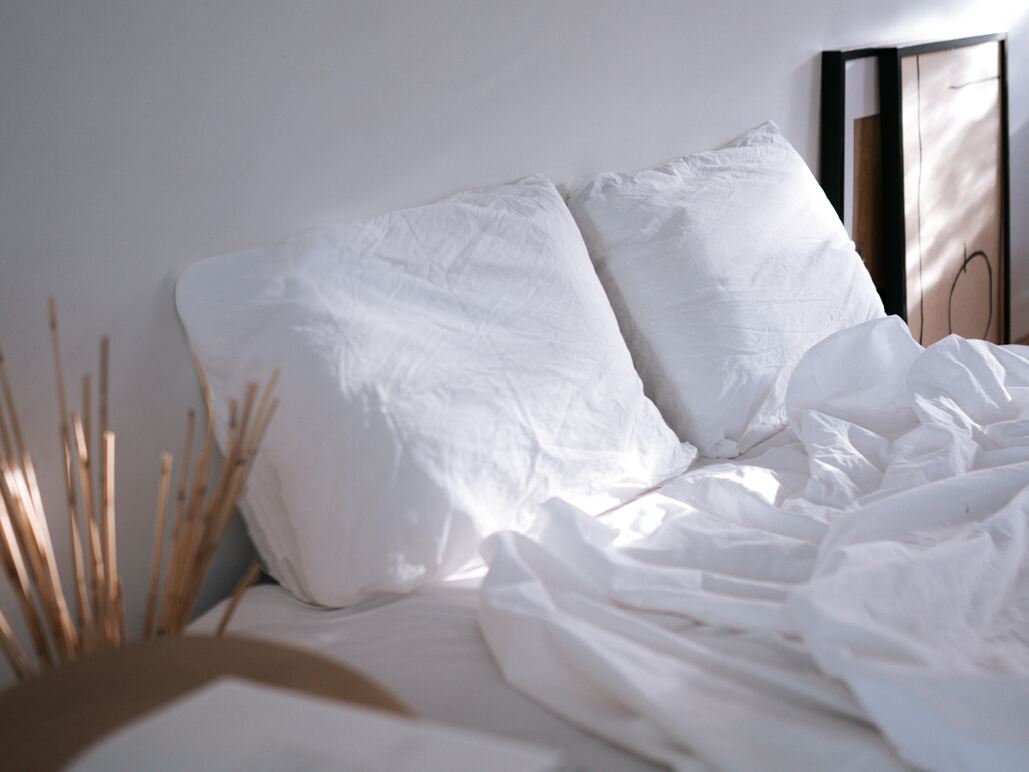
Having a rough idea of how long your pillow lasts can be beneficial. It will give you an idea of when to start looking for the signs that mean your pillow needs to be replaced.
Experts suggest that pillows should be changed around every 1 to 2 years. This may vary depending on usage.
In the UK, statistics show that people only change their pillows every 3.2 years. This is nearly double the recommended amount of time.
This may be down to people trying to get the best value from their bedding. It could also be because people simply don't know when their pillows should be changed.
Good pillow care can help to prolong its lifespan. Using a pillow protector and washing it can make it last longer than the 1 or 2-year average.
The pillow type will also determine the average lifespan. Most pillow types will last for 1 to 2 years. This includes:
-
Memory Foam
-
Pocket Sprung
-
Galtex
-
Hollow Fibre
-
Bamboo
-
Wool
In comparison, latex pillows can last as long as 5 years. The durable materials and convenience of cleaning help to prolong the life of a latex pillow.
The Top 3 Reasons Your Pillow Should Be Replaced
All pillows will have to be replaced at some point. The top three reasons that pillows need to be replaced include:
1. Allergen Accumulation
Over time pillows and mattresses accumulate allergens. This is caused by debris getting embedded into the pillow. This includes:
-
Saliva
-
Sweat
-
Body Oil
-
Dead Skin
-
Dust Mites
Using a high-quality pillowcase can help to prevent this. However, over time it can cause allergens, mildew, and mould to form.
This can cause your pillow to smell. It can also lead to a number of potential health issues. These include:
-
Nasal Congestion
-
Rashes
-
Runny Nose
-
Itchy Throat
-
Itchy Eyes
Another issue that can arise is breathing difficulties. This can be dangerous for people with existing conditions like asthma.
These issues can disturb your rest. A good night's sleep is essential to your physical and mental health. This underlines the importance of high-quality, clean pillows.
Dust mites find that dirty pillows are great breeding grounds. They are able to thrive in warm conditions and feed on dead skin cells.
They can cause allergic reactions. Sufferers from eczema and asthma can also suffer flare-ups.
Over time the number of mites can grow. As this number grows, so does the number of dead mites and faeces in your pillow. As you can see, this is something that should be avoided at all costs.
2. Shape Loss
The shape of a pillow is essential to the support it can provide. Your head and neck need the correct support to ensure they are aligned with your spine. Failure to do this will result in discomfort and pain.
Your body should be able to rest in a natural position. All pillows will flatten over time and begin to lose their shape. A flat pillow won't offer adequate support.
A good way to test whether your pillow still has enough shape to support you is by folding it. If your pillow bounces back to its regular shape after being bent in half, it should still have enough support.
Pillows that stay folded over will have lost their shape and support. If this is the case, you should invest in new pillows.
If your pillow feels flat or lumpy, it will typically need to be replaced. If you struggle to get support from regular pillows, investing in a Bolster pillow can provide excellent body support.
3. Loss of Comfort
If a pillow is uncomfortable, it is not doing its job. You won't enjoy a good rest if you are uncomfortable.
This can be caused by the pillow being old. It can also be caused by changes in your sleep habits.
Different pillow types suit different sleep styles. If your sleep style changes, you may need to change your pillow to get the right support and comfort.
You should always listen to your body when it comes to pillows. If you're uncomfortable or feel stiff in the morning, changing your pillow can be a great solution.
The Telltale Signs It's Time To Change Your Pillow
Knowing when to change your pillow will help you enjoy a more comfortable rest. It will also stop you from throwing pillows away that still have life left in them.
The top telltale signs that your pillows should be replaced include:
-
Constant readjustments are needed - Having to re-fluff and reshape your pillow is a sure sign that it has lost its firmness. This means it will no longer offer the support that is needed.
-
You wake with a sore neck - If you wake up with a sore or stiff neck in the morning, your pillow is not doing its job. Sore necks can be caused by a range of things. If you notice your sore neck eases off as the day goes on, it is probably sleep-related.
-
The pillow is lumpy - If your pillow stuffing is lumpy and uneven, the inner materials will have lost their form. This will only get more uncomfortable and affect your sleep.
-
The pillow fails the fold test - Folding your pillow in half and letting it spring back to its original form proves it is still useable. Synthetic pillows should be folded with a slight weight (hardback book) placed on top. If it overpowers the weight, it will be ok.
-
Your pillow is stained - If you can see stains on the outside of your pillow. It is safe to say the inside won't be any better.
-
The pillow smells - An accumulation of allergens in the pillow can cause it to smell. This can affect your sleep. It can also affect your health and should be replaced as a matter of urgency.
An Expert Guide On How To Wash And Dry Pillows
Washing pillowcases is second nature. But washing the pillow itself is not as common. Around 40% of people surveyed in 2020 admitted to never having washed their pillows.
You should always check the individual washing instructions. These will be provided by the manufacturer for your pillow.
This guide will help you wash pillows, regardless of their type, minimising the need to replace them regularly.
How To Wash And Dry A Memory Foam Pillow
Memory foam pillows should be washed every couple of months. They should be hand-washed using detergent.
Removing dust using a vacuum before washing is a great way to ensure dirt isn't being rubbed into the pillow.
Machine washing a memory foam pillow will break up the foam inside. This will result in a lumpy pillow that doesn't support you as it should.
The pillow should be air-dried after washing.
How To Wash And Dry A Feather Pillow
The majority of feather pillows are machine washable. Using a gentle cycle and mild detergent will minimise the risk of damage.
Air drying your feather and down pillows is advisable.
In some cases, feather and down pillows advise that they should be dry cleaned only. Always follow the pillow's care instructions.
How To Wash And Dry A Wool Pillow
Wool pillows should not be machine washed. Use a basin of cold water to submerge and soak the pillow. You can then hand wash the pillow with a mild detergent gently. After rinsing, the pillow should be air-dried.
How To Wash And Dry A Polyfoam Pillow
Polyfoam pillows should be cared for in the same way as memory foam pillows. This means you should not machine wash them.
Gently handwash the pillow and air dry every couple of months.
How To Wash And Dry A Polyester Pillow
Polyester pillows are typically machine washable. Check the care label to see whether you should use a warm or cold cycle. A slow cycle works best for this type of pillow.
Cleaning several pillows at once balances the load and results in an even clean.
How To Wash And Dry A Latex Pillow
You should never machine wash a latex pillow. Spot cleaning a latex pillow with a mild detergent is advised. This is because you should not fully submerge them.
After washing, you should air dry the pillow. Wringing a latex pillow will damage it.
How To Wash And Dry A Buckwheat Pillow
Buckwheat can be damaged by contact with water. Regularly replacing the buckwheat and hand-washing the cover is a great solution.
How To Choose A New Pillow
The best part of throwing away your old pillow is that you get to choose a bright, comfortable, and bouncy new pillow! When picking out a new pillow, a good place to start would be to check out Belledrom's extensive pillow selection, which includes everything from wool to silk pillows. Our collection also features a range of different pillow shapes, including V-shaped ones.
Choosing a new pillow can be challenging but ultimately rewarding. There is nothing quite like sinking your head into a new pillow after a long day.
Our extensive pillow collection has a variety of materials and pillow shapes to choose from. Explore our range of high-quality pillows to ensure you get the rest you need.
FAQs
How often should I wash pillowcases?
Cleaning your pillowcase regularly is necessary for removing dead skin cells. This minimises the risk of allergen build-up.
Washing your pillowcases weekly should help you enjoy a clean, fresh pillow.
Alternating pillowcases can also help to prolong their lives and make it easier to enjoy a regular cleaning cycle.
Can pillow dust mites be killed?
Ascaricides can be used to kill dust mites in pillows and bed linens. This technique is said to have relatively limited results.
The best solution is to replace your bedsheets and pillows when mites start to appear. They are a good sign that the pillows and bedding have a high level of debris.
For a hygienic bed, replacing bed linens and pillows will help. Regularly washing your bed linen and pillows should delay this necessity.
Should I use more than one pillow?
Everyone is different. The pillows you sleep with should be determined by the comfort and support they provide.
Sleeping positions will also determine the number of pillows required. Most side sleepers require two standard-sized pillows to align their neck with their spine.
Stomach sleepers typically need just one pillow. This stops the head and neck from being pushed back out of alignment.
Are memory foam pillows the longest-lasting?
A good memory foam pillow will typically last for around two years. The longest-lasting pillow type is the latex pillow. Latex pillows can last up to 5 years.
Conclusion
How often you should replace an old pillow will be determined by a number of factors. The advice provided in this guide should help you determine when you should replace your pillow.
Old pillows that have lost their shape can have a negative effect on your sleep quality.
Cleaning pillows regularly and investing in a pillow protector can prolong the life of an old pillow.
If you need to replace pillows, explore our extensive pillow collection. We have something for everyone that can improve your sleep and provide an adequate neck support.


